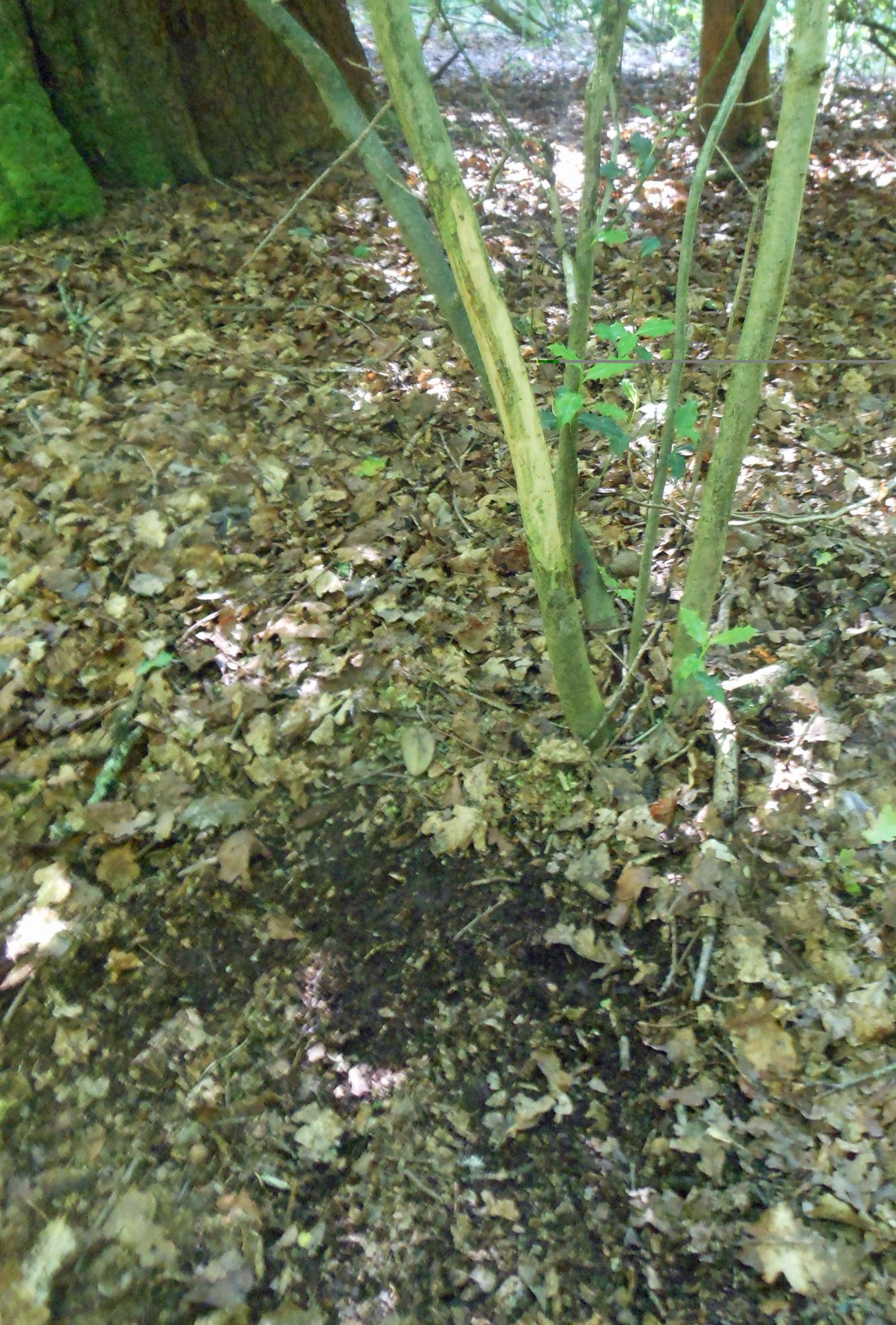Roe deer: subtle colours and sharp points.

This is one from the archives; I’ve photographed many over the years. Some old, some young, and one playing you-cannot-see-me with a completely oblivious dog.

They’re a small species (admittedly, not small enough to hide behind grass that low), but full of surprises. Rutting in the summer, the only deer that has delayed implantation of the embryo, and locked in a strange relationship with the human species that has variously eradicated and reintroduced them. But the point of this post is that you don’t have to see roe to know what they’re up to. They’re one of my favourite species to track.

Their hoofprints are small and neat, and so are the bucks’ territorial markers. They push their heads against narrow trunks, rubbing off the bark and scraping at the base with their hooves.

Roe also create beds, of a sort. An experienced eye can easily pick out the bare oval patches on the woodland floor where a roe has scraped aside all leaves and twigs, and settled down for a rest. My trailcam has just caught this behaviour.
The brown blur on part of the lens is quite possibly a stray deer hair.
This buck rested for many minutes, closing his eyes as he chewed the cud. A moment of peace, but tracking goes both ways. For every deer we see, there must be many more who quietly watch us.
I am quite sure we are observed more than we ourselves observe. We’ve lost that keen sense of awareness living our cushy life. 😉
LikeLiked by 1 person
Too overloaded with trivial distractions much of the time! It’s amazing how even a few days of living in the forest sharpens the senses.
LikeLiked by 1 person
Trail cams are a wonderful thing for capturing scenes you wouldn’t see if you were there in person. (I don’t have one, but I’m making this comment from what I see on your blog posts.)
LikeLiked by 1 person
They’re great fun, most of the time. Unless they’re being stolen, eaten by wildlife or just in a bad mood 😉
LikeLiked by 1 person
They are so pretty and delicate looking. I agree; we likely are much more often observed. This morning I realised that a rather large wolf was watching me while I was on my way to work. I just kept going!
LikeLiked by 1 person
That’s one thing that hasn’t happened in southern England for a few centuries! I’ve always been amused with the great cats that they often don’t even turn to look at a nearby human. I can imagine that wolves are often more attentive, although most of the ones that I’ve seen have either been at a considerable distance, or have been distractedly heading off somewhere else.
LikeLiked by 1 person
Lovely animals; I’m always pleased to see them, which isn’t nearly as often as I’d like. The idea they are watching us watching them is strangely appealing.
LikeLiked by 1 person
There is a magic about roe and their secretive lives in the woodland glades.
LikeLiked by 1 person
Looking beautiful excellent shot! Well shared with video . Thanks 👍
LikeLiked by 1 person
Thank you Priti, and welcome here! 🙂
LikeLike
The location where I spend most of my outdoor time, Quabbin Reservoir, is home to many whitetail deer. One gets to see them often enough but they are shy (hunting of them to “thin the herd” is allowed for a few weeks each year so they know humans can be dangerous.
There are also some in our neighborhood, as our gardens attest, but they are even more shy around developed land. It was enjoyable watching your video.
LikeLiked by 1 person
Thanks Steve. I’ve seen whitetails in the prairies, where I gather they’re a fairly recent arrival. Roe deer are much smaller (only 65cm / 25in at the shoulder) and not very sociable – usually alone or in small groups.
LikeLike